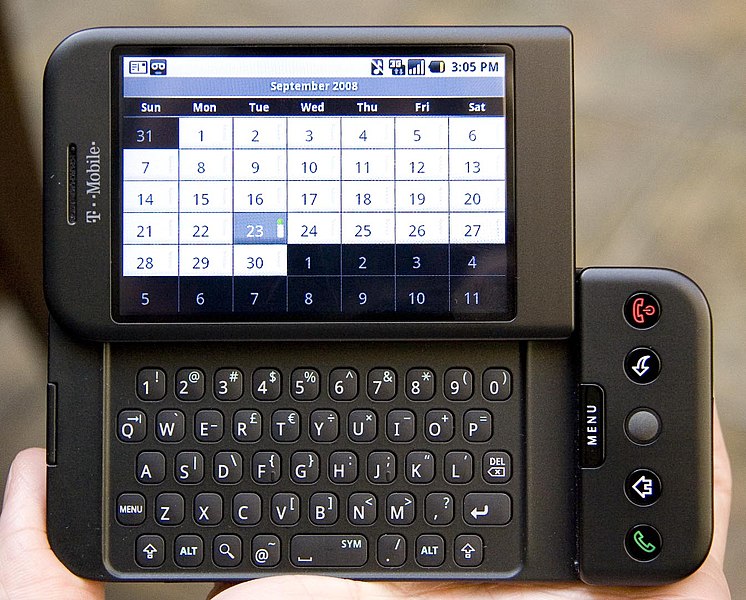
What is Android, you might ask? Android is a software platform and operating system that Google developed for mobile devices. Based off of the Linux kernel, it also allows developers to code in a Java-esque syntax: however, it does not provide the full-class libraries/APIS that come with the Java SE or Me, but rather implements the Apache Harmony Java.

Regardless of its seemingly limited functionality, Paul Reddick, CEO of Handmark (a developer of mobile media apps and services for the iPhone, BlackBerry, Windows Mobile, and other OSs) thinks Android will "help breed the simple and elegant programs consumers crave". Much like many new introductions in the world of technology, Android may not be at its peak now, but is full of promise: many people favor its flexible interface. Google assures that the feature of Android is "openness", promising that developers can produce applications without interference. Only time will tell, I imagine. On the one side, Android is an advanced, open, cheap OS, making it important to the development community. But as Reddick says, "customers don't buy operating systems." I'll leave it up to you to decide.
Apart from Android, the G1 is chock full of pretty little features - some new and unique, some evolving from other phones.
It comes in black, bronze, and is set to be released in white sometime down the road. Weighing 5.6 ounces, it's a little thicker and longer than the iPhone, and has a smaller screen. However, along with a touch screen, it also has a menu of 6 physical buttons, a trackball, and a slide out full QWERTY keyboard.

You can make a call by tapping the dialer icon on the touch screen, the physical send key, or use voice dialing (voice recognition and speakerphone also featured). The G1 has a desktop screen, which displays a large clock and a couple simple icons: Dialer, Contacts, Browser, Maps, and T-Mobile's MyFaves speed-dialing feature. If you slide your finger to the left, A Google search bar appears. Slide your finger in either direction, and you're provided with space for more icons. Tap/drag the tab at the bottom of the screen, and you'll be presented with a screenful of icons for programs, settings, etc. The screen is also viewable in portrait or landscape mode, but does not change when you rotate the device (like the iPhone does). However, the G1 does have an accelerometer/motion sensor.
The G1 DOES come with memory for pictures, music, or video...but strangely, not for applications. It comes with only 1GB, but the card can be expanded to 16 GB.
And yes! The G1 is fully functional with your Gmail account! Who would have guessed? You must set up the phone with your existing Gmail account, or create a new one. Your contacts, calendar events, and e-mail are synced between your phone and computer. CAUTION: Google insists that your privacy is protected, but there has been concern from people such as senior vice president Roger Entner at Nielsen IAG. You can also use alternative e-mail accounts and instant-messaging programs, not just Gmail and Google Talk.
Google maps (using GPS) offers a very cool feature of a street-level photograph of your whereabouts. It gives you a 360-degree view of the street as you move your hand, synchronized with a built-in compass.
The high-speed 3G data network is curerntly supported in more than 20 metropolitan markets, with more apparently coming ( www.t-mobile.com/coverage) The G1 browser allows yo uto drag pages around with your finger, tap the screen to zoom in or out, or place a rectangle around the area of the screen you want to highlight. Android also provides "The Market", an app store that's currently still in beta. Some Android apps include Ecorio, which lets you calculate your carbon footprint when you travel, and ShopSavvy, which uses G1's camera to scan bar codes on books, DVDs, and other products. You can then read reviews of the procuts or do quick price comparisons on the Web. Pretty useful, if you ask me.
The G1 is equipped with a 3 megapixel camera. It doesn't shoot video, and unfortunately, getting pictures off the computer onto the phone and the photo-viewer program are very unfriendly. An Amazon MP3 store is installed for previewing and purchasing DRM-free music. You can watch YouTube videos, but you have to go to the Android Market to find a player for other videos. Also, there is no standard jack for using your personal headphones without an adapter; so unless you have one, you you'll have to stick with the mini USB headphones that are supplied

As a whole, the Google G1 Android phone seems pretty raw, but shows promise for the future. Keep your eye out for it in stores at the end of this month.
Happy Googling ^.^
USA TODAY's G1 PROs/CONs and Pricing Info
* $179 with two year T-Mobile voice plan; $399 without a plan. Monthly data plans are $25 and $35.
PRO. Google's Android mobile platform is pretty slick and full of promise. Phone makes good use of touch-screen and slide-away Qwerty keyboard. Integrates well with Google services (maps, Gmail, etc.). Removable battery.
CON. Phone won't win any beauty contests. T-Mobile fast 3G data network is in fewer places than rivals. Non-standard headphone jack. Requires third-party video player for non-You Tube videos. Memory is expandable (via Micro SD cards), but supplied 1GB amount is relatively paltry.













































